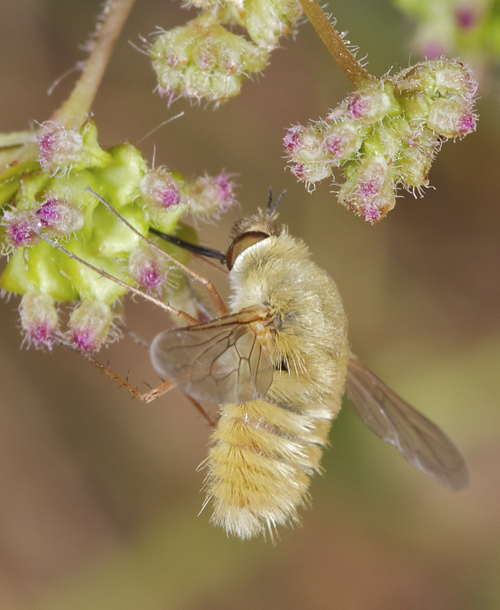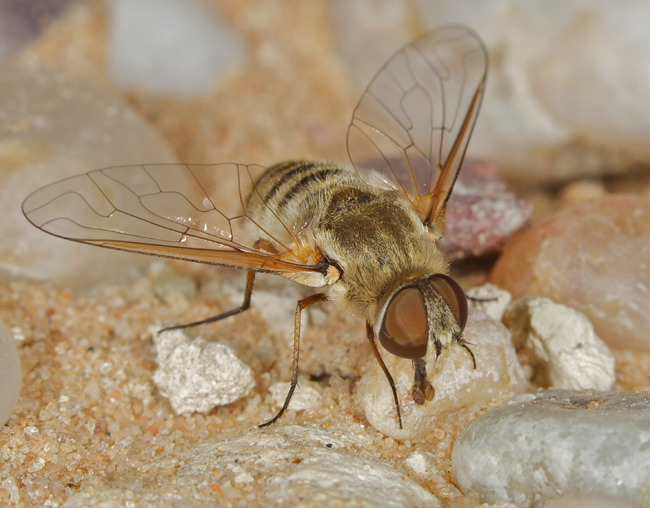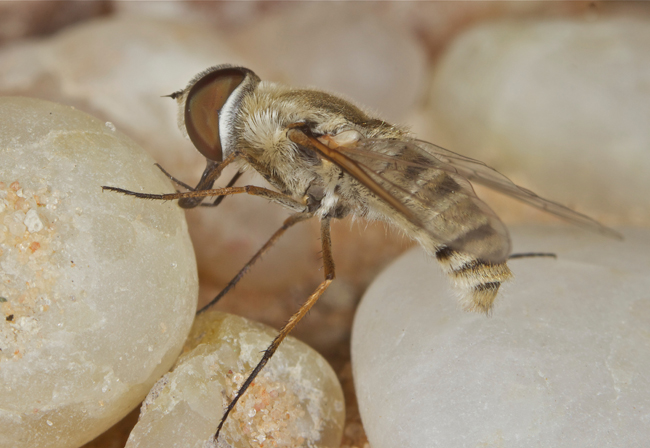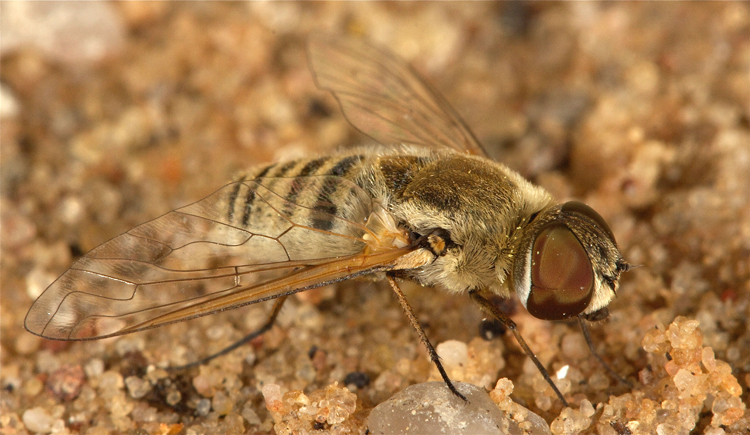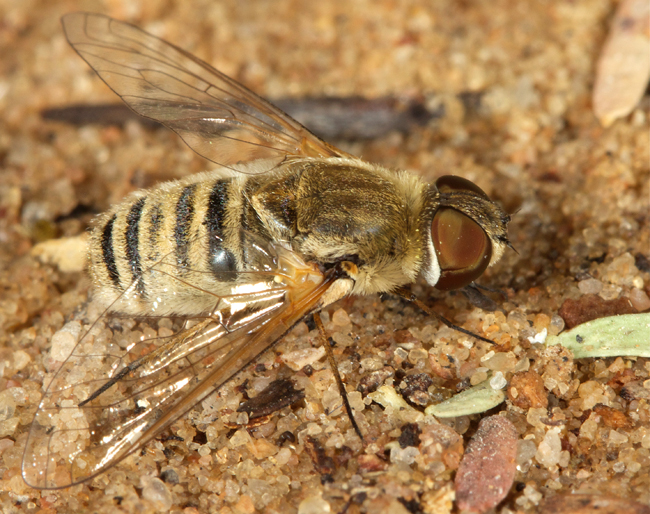Family: Bombyliidae Subfamily: Bombyliinae. Tribe: Bombyliini
Kgalagadi Transfrontier Park
The family Bombyliidae is arguably one of the most poorly known families of insects relative to its species richness. They have powerful wings and are found typically in flight over flowers or resting on the bare ground exposed to the sun. When at rest, many species hold their wings at a characteristic "swept back" angle. Adults generally feed on nectar and pollen and often have very long probosces. Many Bombyliidae superficially resemble bees and this may represent an example of Batesian mimicry, affording the adults some protection from predators.
Genus Anastoechus:
Anastoechus is a widespread genus, 30 species in the Afrotropical region.
Broad head and shaggy bristly vestiture. Medium sized (5-13 mm) flies with short antennae and very long proboscis, body covered with white, yellow, orange, or brown pile. Face rounded in side view, with dense pile. Abdome ovate, long shaggy setulae.
Hind femura with row of setae ventrally.
Wing broad at base. Wing cell r5 closed or narrowly open before wing margin. Crossvein r-m situated before basal quarter of cell dm, cells br and bm of equal length.



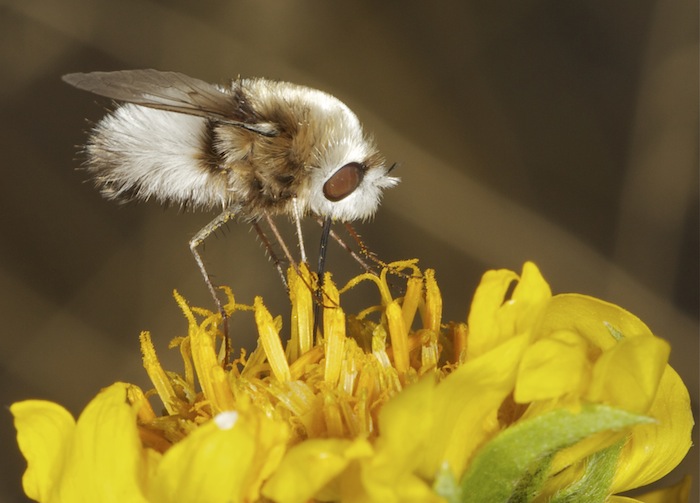 © ExFmem
© ExFmem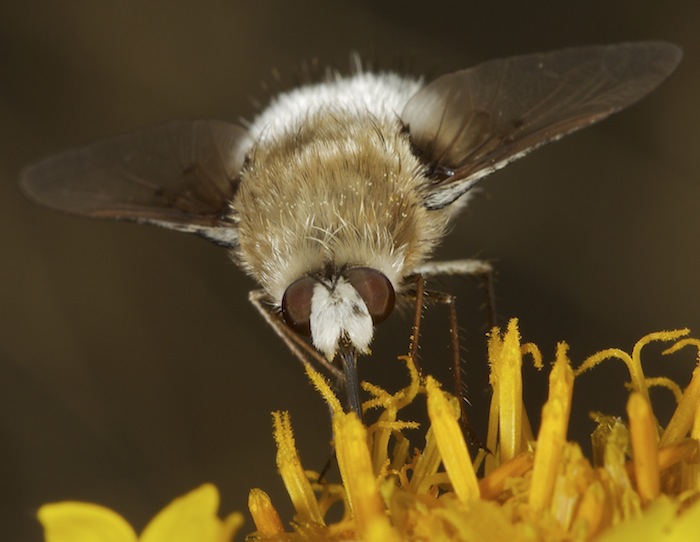 © ExFmem
© ExFmem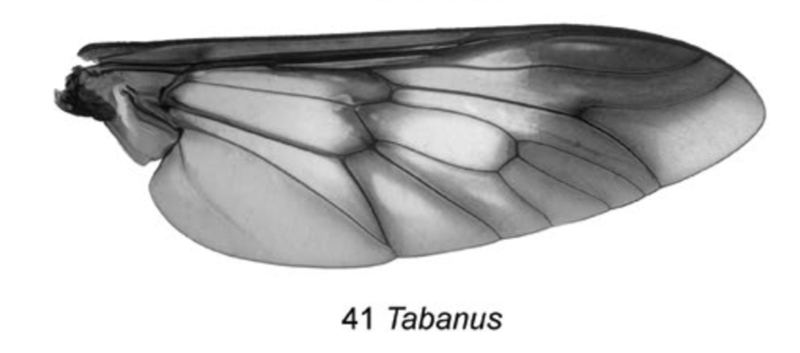
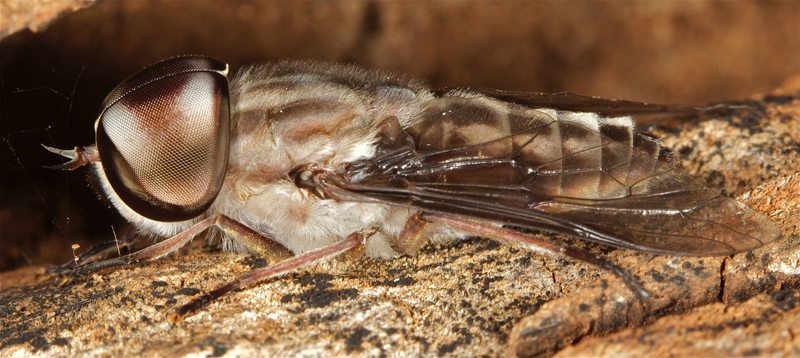
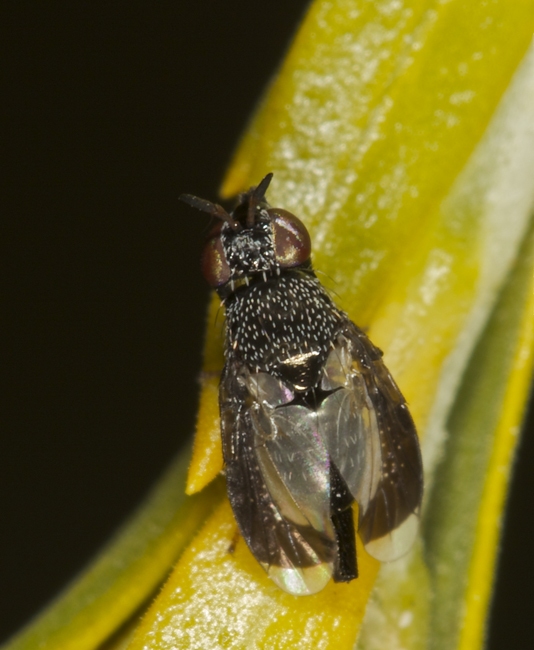 © ExFmem
© ExFmem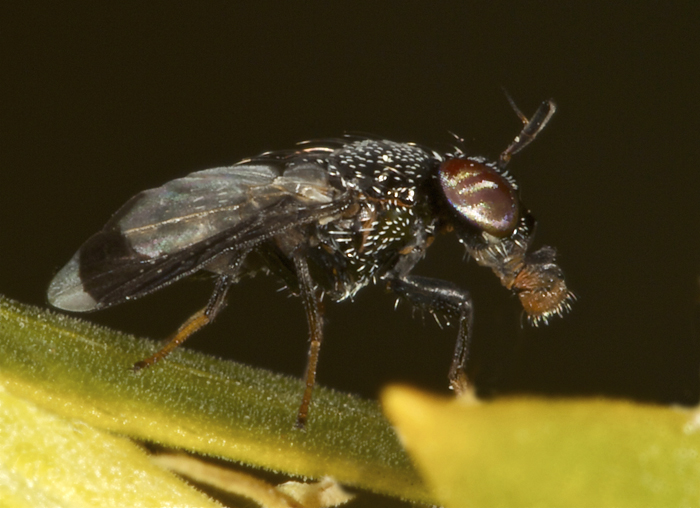 © ExFmem
© ExFmem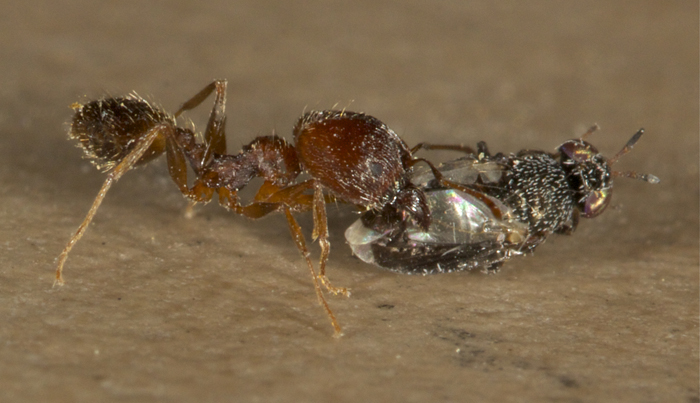 © ExFmem
© ExFmem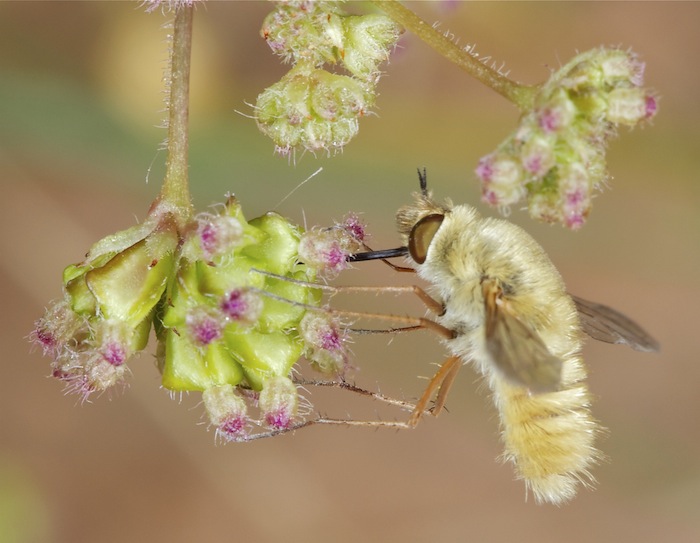 © ExFmem
© ExFmem